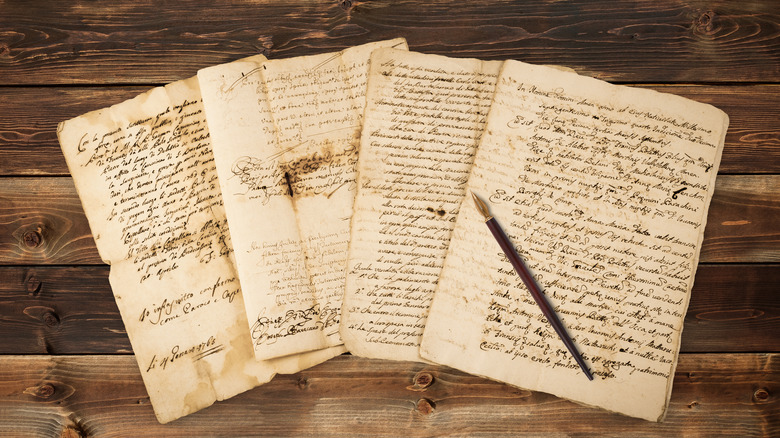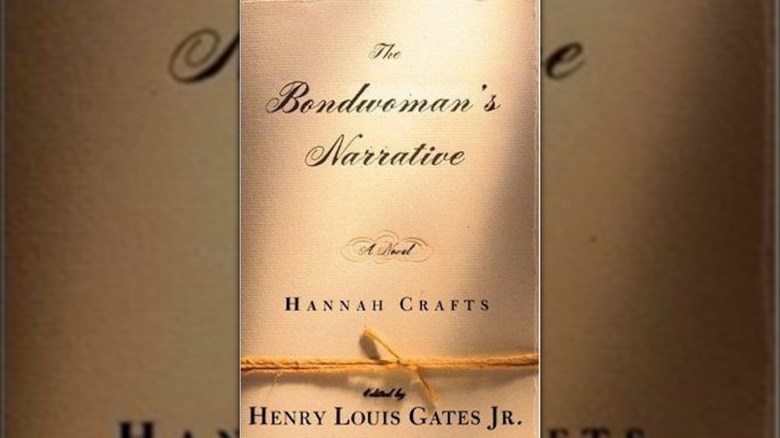Who Was Hannah Crafts, One Of The First Known Black Female Novelists In America?
Unfortunately, the experiences of many enslaved African Americans who managed to flee to the North in the 19th century have been lost to the winds of time. Often, escapees were forced to leave behind their possessions, change their identities, and live in hiding in the years after fleeing captivity. Unlike stories from travelers in the Great Migration of the early 20th century — many of which were recorded as part of the Federal Writers' Project — only a small proportion of early escapee stories have survived to be heard today.
So it is no surprise that the writing of Hannah Crafts, a former enslaved person who is credited as the earliest African-American woman novelist, is considered of such vital importance to scholars. Believed to have written her only work sometime in the 1850s, her writing languished in private possession, unpublished for almost a century and a half. Eventually, experts had the work authenticated and put into print before eventually confirming that the tale — that of an enslaved girl escaping the South with her mistress — was composed as a semi-autobiographical work by a slavery survivor writing under a pseudonym.
The Bondwoman's Narrative
The original manuscript of "The Bondwoman's Narrative" first came into the public eye in 2001, when it was put up for auction by a private seller. The work in question bears the following writing on the title page (via The New York Times): "The Bondwoman's Narrative By Hannah Crafts A Fugitive Slave Recently Escaped From North Carolina." Inside, it tells the story of a girl named Hannah who escapes a Southern plantation before fleeing north, encountering various picaresque obstacles on the way.
But just because a manuscript says something, doesn't mean it's true. Indeed, before the auction, little was known about whether the document in question truly was written by someone who escaped slavery — as the commonality in the name of the author and protagonist suggested — or whether it was from the mid-1800s at all. However, the work was bought by scholar of African-American history Henry Louis Gates Jr. (pictured), who had the work authenticated and published for the first time. It became a bestseller. But the question remained: Who exactly was Hannah Crafts?
Uncovering the real Hannah Crafts
The riddle surrounding the identity of the writer of "The Bondwoman's Narrative" seemed to have been finally cracked in 2013. As reported by The New York Times, English literature scholar Gregg Hecimovich of South Carolina's Winthrop University shared the results of years of research into the true identity of Hannah Crafts.
Hecimovich claimed that Crafts' real name was Hannah Bond — which gives a new twist to the "Bondwoman" of the title — and that she was indeed a former enslaved person who escaped from North Carolina. Like the Hannah of the book, Bond had been held captive at a plantation owned by John H. Wheeler. According to Hecimovich, she escaped around 1857 and eventually settled in New Jersey, where she became a teacher and presumedly wrote the work. The Wheeler residence where Bond lived was known to have a library, which Hecimovich says explains the many effective literary allusions found in her work that differentiate it from other slave narratives of the period.
Henry Louis Gates Jr. was taken aback by Hecimovich's discovery, saying (per The New York Times): "Words cannot express how meaningful this is to African-American literary studies. It revolutionizes our understanding of the canon of Black women's literature."


